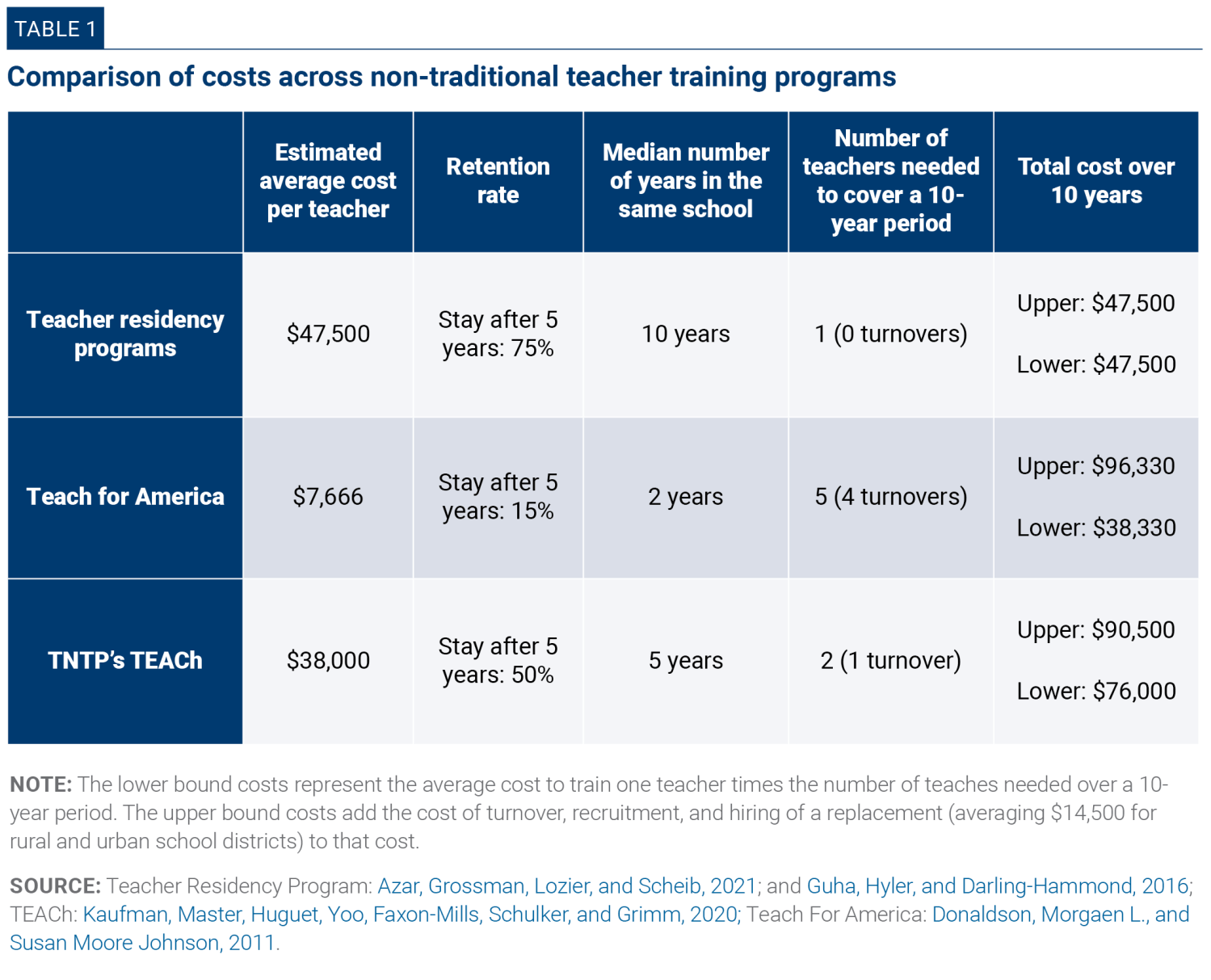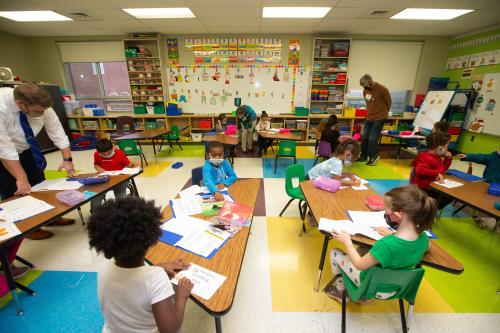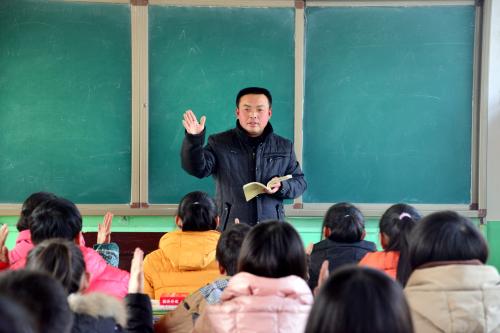Concerns over teacher shortages, increased rates of turnover, and declining enrollments in teacher preparation programs are causing many stakeholders to worry about the future of the nation’s educator workforce. Despite initial evidence suggesting that concerns over teacher turnover and shortages may have been overblown, more recent research indicates that turnover rates have indeed increased and are approaching or topping all-time highs. Education policy experts are deeply concerned that the status of the teaching profession is reaching a historic low point.
As states and school districts search for strategies to attenuate the current crisis in the educator labor force, one promising approach that has gained traction in recent years is Teacher Residency Programs. Teacher residency is an alternative pathway into teaching for career switchers or recent college graduates that is co-led by school districts and institutions of higher education. More districts are experimenting with teacher residencies now than in recent years—in part because states and districts were allowed to use federal pandemic relief aid to support these programs. In this post, we provide an overview of what teacher residency programs are and discuss the nascent evidence on their effectiveness and cost.
What are teacher residency programs?
Teacher residency programs (TRPs) recruit aspiring teachers to train and work in hard-to-staff positions—with training often taking place in the specific school where they will eventually become full-time teachers. TRPs are co-designed and co-led by school districts and university-based teacher preparation programs. This model allows local districts to tailor the program toward their specific staffing needs and community context. For example, in San Francisco, teacher residents go on “rounds” with different student populations enrolled in San Francisco schools, such as students in their juvenile detention centers.
Additional programmatic elements of TRPs typically include a competitive admissions process for both aspiring teachers and mentor teachers, co-teaching opportunities for candidates, induction support, and access to professional learning communities. Teacher candidates often finish residency programs with a master’s degree and teaching certification. Importantly, TRPs can provide a more affordable pathway for aspiring teachers. Teacher residents are often paid a stipend and can receive tuition remission if they work for the sponsoring district for a certain period, usually three to five years.
The National Center for Teacher Residencies (NCTR), which helps launch and support teacher residency programs, has grown to a network of over 45 residencies since 2007. Yet, teachers trained through TRPs represent only a small share of new teachers entering the workforce each year.
Even so, TRPs have the potential to help districts fill their hard-to-staff positions. According to data from NCTR, nearly all (97%) graduates of teacher residency programs go on to teach in Title I schools. TRP graduates also go on to work in high-need subject areas at higher rates than traditionally trained teachers. As of 2018-19, 33% of all TRP graduates taught STEM subjects, 30% taught English language learners, and 22% worked in special education.
TRPs can also help diversify the teacher workforce, which remains overwhelmingly white and female. In 2020, 55% of teacher candidates going through resident programs were people of color. By comparison, people of color account for just over 20% of the public teacher workforce based on the most recently available national data.
Preliminary evidence suggests that TRPs may boost student achievement and reduce teacher attrition
Although the evidence base is nascent, initial studies indicate that TRP-trained teachers are effective at raising student test scores. For example, according to a 2012 study, TRP graduates performed similar to their non-TRP counterparts in the first years of teaching but improved rapidly over time, such that by years four and five they were outperforming their traditionally trained peers.
Early data also suggests that TRP-trained teachers stay in the classroom longer than their traditionally prepared peers. A qualitative study of school districts that received Teacher Quality Partnership grants found that 82% of teacher residents, compared to 72% of non-residents, remained in their districts in years three and four of teaching. Other descriptive studies echo these findings showing that TRP trained teachers had a 20 percentage point higher retention rate than their peers in Boston and 27 percentage points higher in San Francisco.
TRPs have high upfront costs for districts, but the investment may pay off in the long run
Implementation research suggests that residency programs often require significant upfront investments from districts. But we also know that high rates of turnover are costly for districts. Thus, whether TRPs pay off in the long run hinges on retention rates for TRP-trained teachers relative to teachers trained through other alternative or traditional certification programs. To illustrate this point, we present a simple stylized cost analysis comparing long-run costs of TRPs relative to two other popular programs that prepare teachers to work in similar high-needs settings: Teach For America (TFA) and a grow-your-own program, TEACh.
TFA and TEACh are also both alternative certification programs. TFA is a national organization that recruits recent college graduates and career switchers to teach in high-need settings for two years. TEACh is managed by another national organization (TNTP) but is a district-led grow-your-own program designed to support teacher recruitment in hard-to-staff subjects.
Estimating direct placement costs
All three programs have some upfront direct costs to school districts. We know, for example, that districts pay TFA $7,666 (on average) for a two-year placement.[1] While we do not know the precise upfront costs borne by districts for TRPs and TEACh programs, we do have information on the total costs for these programs. The total cost per resident for NCTR-affiliated TRPs ranges from $35,000 to $60,000, whereas the average cost of TEACh programs is $38,000 per trained teacher. In our back-of-the-envelope calculations, we assume that districts bear the full cost of TRPs and TEACh programs. We do so to illustrate that even under these extreme assumptions, TRPs and TEACh programs appear more cost effective in the long run given their graduates’ higher retention rates.
Estimating retention rates
Prior research suggests that 75% of TRP graduates remain in their initial placement after five years, while TFA teachers’ five-year retention rates are estimated to be at 15%. Research on TEACh programs suggests that teachers trained through this program have similar retention rates to the average teachers in the district where they are located. According to prior research, teachers in high-need schools lose roughly half of their teachers by year five.
Estimating the indirect costs of teacher turnover
From the school district’s point of view, the cost of teacher turnover can be high—a reality that motivates district leaders to develop residency programs. According to analyses by the Learning Policy Institute, the cost of teacher turnover (including the direct costs of recruiting, hiring, and onboarding a replacement teacher) can range from $9,000 in rural settings to $20,000 in urban areas.
Cost comparisons
We stress that the information we have about these costs is not perfect and includes different items for each of the programs. Also, drawing retention rates from studies conducted in various settings has its own limitations and comparability issues. The objective of this post is to present a simple yet helpful way of considering the total costs of teacher training programs and to highlight the lack of available data which is needed to conduct robust cost-benefit analyses to better inform district leaders and other stakeholders of the tradeoffs they face.
Table 1 compares the costs to a district to staff one classroom over a 10-year period across various teacher training programs. We start by estimating the median number of years a typical new teacher will remain in a school for each program using information on program retention rates discussed above.[2] Based on this analysis, we estimate that to staff one classroom over a 10-year period, a school would need to hire one TRP graduate, five TFA graduates, or two TEACh graduates. We then multiply the number of teachers needed over a 10-year period per classroom by the average training costs for each program. This figure represents a lower-bound estimate of the long-run costs of hiring a teacher from each program. We also present an upper-bound estimate which also considers the average indirect “costs of turnover” to a district (multiplied by the number of turnovers corresponding to each program).

From this exercise, we see that determining the most cost-effective training programs for the district to partner with depends heavily on how long each program’s teachers stay in the classroom. As such, given their higher retention rates, TRPs (and to a similar extent, the TEACh program) begin to look like a much smarter investment for districts relative to TFA hires. This is true even when we assume that districts will bear the full program costs for TRPs and TEACh.
Costs paid by districts and retention rates determine viability of TRPs
TRPs are expensive, making them challenging to both fund and sustain. There is also limited research on their effectiveness in terms of student achievement, although what evidence exists is largely positive. And importantly, compared to traditionally prepared teachers with similar years of experience, TRP graduates have higher teacher retention rates in challenging, hard-to-staff settings. Given the high costs of teacher turnover in high-need settings, TRPs could be worth the investment in the long run.
TRPs also achieve other outcomes of importance to the health of the teaching profession and the needs of public school students. TRPs tailor teacher preparation to the needs of specific communities and can help increase diversity and improve stability in the teacher pipeline. The central question then is: Are districts willing to invest in teacher residency programs even when benefits can take years to materialize?
Footnotes
- Calculated using TFA’s 2019 and 2020 financial statement and recruitment figures. (Back to top)
- The median number of years a typical new teacher (from each program) will stay in the same school equals the number of years after which 50% of teachers (trained by each program) leave. We extrapolate the median number of years a typical new teacher will stay in the same school from program retention rates by assuming a linear rate of attrition. To give an example, if 25% of teachers from TRP leave after 5 years, we assume that it will take another 5 years to lose an additional 25% of the initial pool of teachers. This means that the median TRP trained teacher remains in the same school for 10 years. (Back to top)








Commentary
Teacher residencies offer compelling solution to staffing shortages, although at a large investment
May 22, 2023